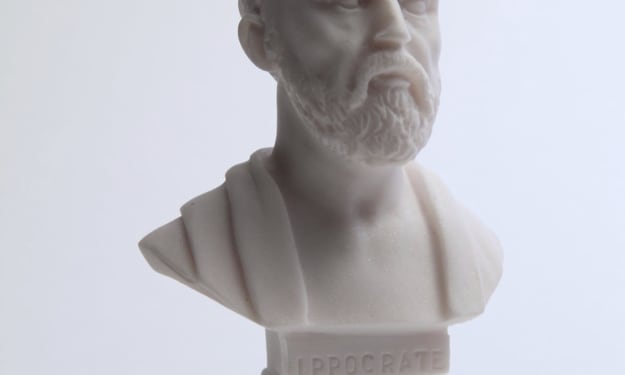Reason First: William Kemmler’s Electric Ride
The drunkard and peddler became the first man to die in the electric chair. But he wouldn’t be the last.

A hatchet sliced into Tillie Ziegler on March 29, 1889. The man holding the bloody murder weapon stood as William Kemmler. A jury found him guilty. A sentence stated that he should be put to death. As an uneducated swindler, Kemmler held onto bits and pieces of rage. For his crime, he would see that fury silenced as the first man to die from the electric chair.
Now somewhat popular in literature and film, Kemmler marked the initial time that the State oversaw a man experiencing electricity pass through his body until he died.
First, Kemmler rejoiced at the fact of pioneering on the wrong side of the electric switch. He danced around to a cell-mate’s banjo like a man who would soon be granted a great fortune. But there remained no wealth or reward for what he did. He then changed his tune. He implored to the Deputy Sheriff Joseph Veiling to not allow the inevitable to take place.
There existed no respite for Kemmler. As the switch threw down and the electricity coursed through his body, he made history and onlookers witnessed justice.
As his body contorted and convulsed, he had made eliminations and the smells of singed skin and burnt hair permeated the area around the execution site.
As far as capital punishment goes, at least the very first use of the electric chair executed a man who deserved it. There remained no doubt that Kemmler had committed the crime. He had murdered his mistress without regard or remorse. This should be the standard for all of the cases of death row inmates. There should not be a shadow of doubt about whether a man or woman is guilty. There should be a definite and resounding amount of proof to lend to the State to take someone’s life.
Who knows how many different cases where someone has been put to death and they didn’t commit the crime that landed them in a chair, gallows, a firing squad, gas chamber, or on a table, or other means of dispatching a person?
Kemmler’s death would be the first in scores of executions of this kind. The irony of how humane the practice still is to this day in eight states as opposed to hanging or lethal injection is still widely debated. Some say that the activity of putting someone to death by way of electrocution is even harsher than being sent to the gallows.
What ought to be taken away from this entire situation is the idea that capital punishment ought to be the very last option. And the idea of people like narcotics manufacturers getting the chair is an absolute abomination. Murderers, rapists, and terrorists ought to be put to death among other closely related offenders. Kemmler just received fame by being the first to receive the electrocution through means of “riding the lightning.”
But the first electrocutioner on record, Edwin F. Davis sent over two hundred people to their death, “including the first woman, Martha Place” according to Paul Donnelley’s 501 Notorious Crimes.
As the debates fly against and for the potential beginning of life (abortion) and end of life (execution) it is clear that those who commit the most heinous crimes are not abortionists but hatchet murderers like Kemmler. He needed to be put to death because he violated the individual rights of Ziegler to the most extreme degree. He received his fate based on his wicked actions.
Though there have been botched electrocutions throughout the decades, its use has punished the lowest vermin in America and the world. Kemmler may have been the first, but he would only usher in newer methods of silencing the lives of those taken beyond death row.
About the Creator
Skyler Saunders
I’ve been writing since I was five-years-old. I didn’t have a wide audience until I was nine. If you enjoy my work feel free to like but also never hesitate to share. Thank you for your patronage. Take care.
S.S.
Enjoyed the story? Support the Creator.
Subscribe for free to receive all their stories in your feed. You could also pledge your support or give them a one-off tip, letting them know you appreciate their work.






Comments
There are no comments for this story
Be the first to respond and start the conversation.